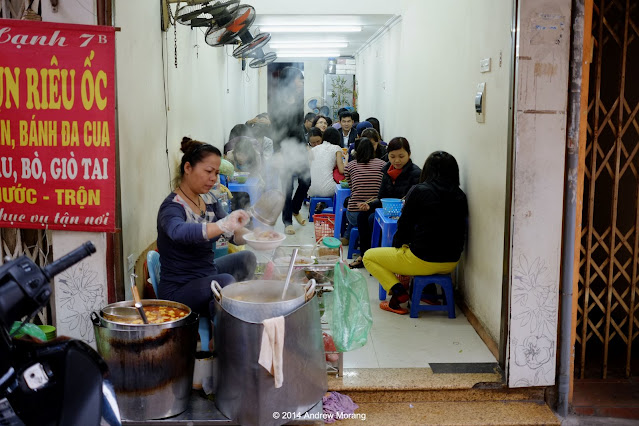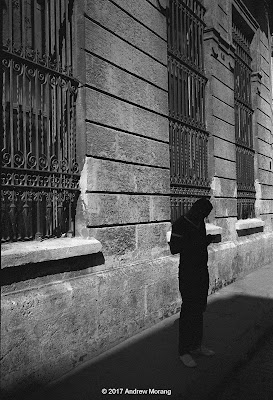 |
| Fan repair shop on Hàng Bồ, Hanoi |
One afternoon, my wife and I were walking down Hàng Bồ in Hanoi's Old Quarter, and we came across this amazing little corner store full of fans. The old gent who ran the shop generously let us look around. I would not be surprised if some of his fans and parts date back to the Indochine Française era. He might have dated back to the French era, too.
Well, possibly the wiring lacks a bit of the elegance that the French might have preferred. But the internet worked.
In Season 5 of Bizarre Foods, Andrew Zimmern dined at a restaurant where you can choose your own snake, and they skin it for you right there. We missed that place.
 |
| An afternoon at Tạ Hiện, Hanoi |
 |
| Snacks and a WiFi signal at Nhà Chung, Hanoi |
Cafe society Hanoi style. My back could not handle the low chairs and tables, but the youngsters seemed unfazed.
Hanoi is a fascinating and fun destination. The city is thriving. It looks much better than many mid-continent US cities. The people are energetic and busy with small shops, repairs, banks, restaurants, and restoration projects. Go there.
If you want to see an epic and beautifully-filmed movie about the war for independence in colonial Vietnam, watch "Indochine" (1992, in French), starring Catherine Deneuve.
And if you want to read how we slipped into war in a post-French Vietnam, read Graham Green's The Quiet American. Mr. Pyle is the naive young American who thinks he can bring "democracy" to Vietnam by backing a certain general. “He was impregnably armored by his good intentions and his ignorance.” The 2003 movie version stars Michael Caine.
I took these photographs with a Fuji X-E1 digital camera. I do not use it often, but when I revive older files, both jpeg or RAW, I am pleased with the optical quality and the uniform performance of the Fuji lenses.




















